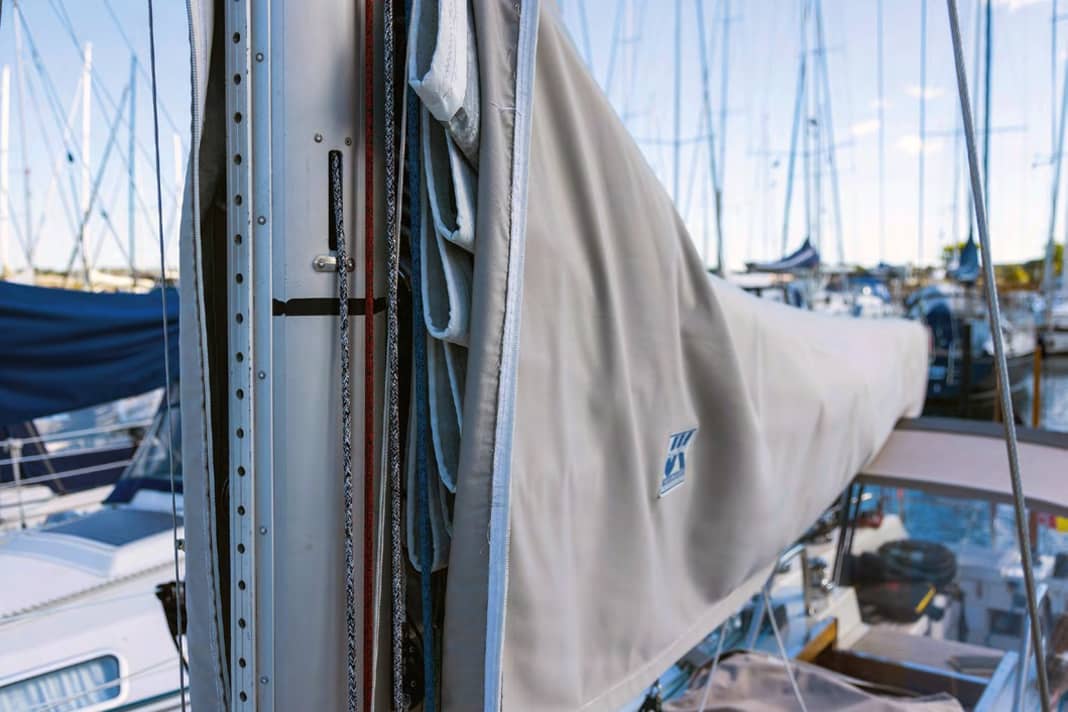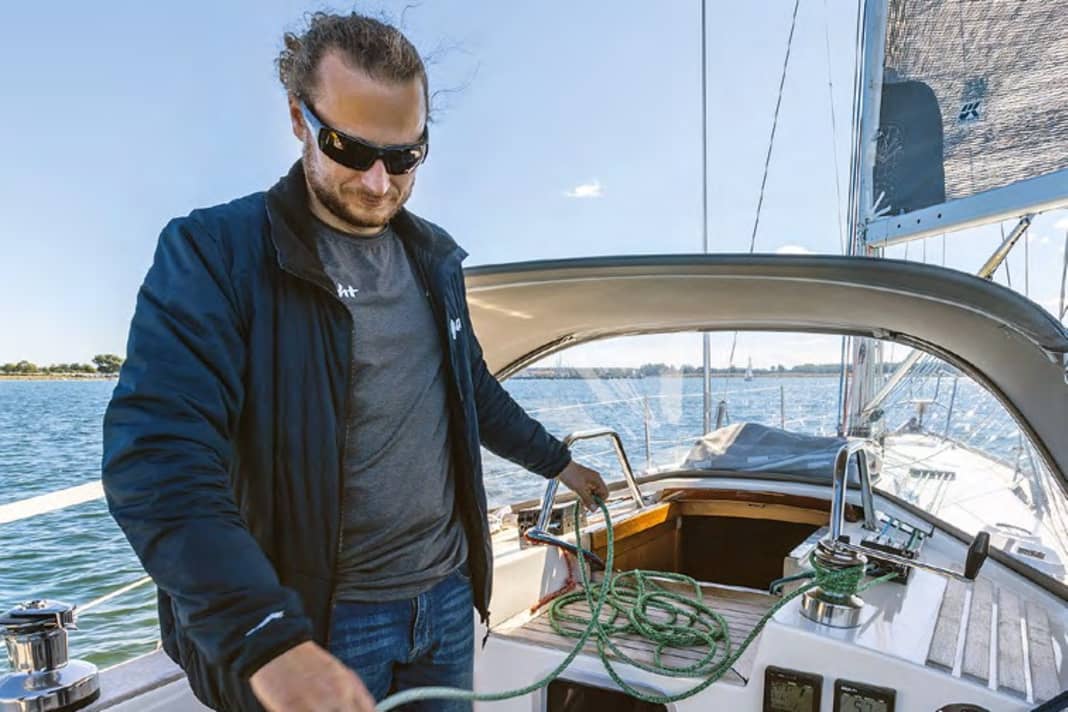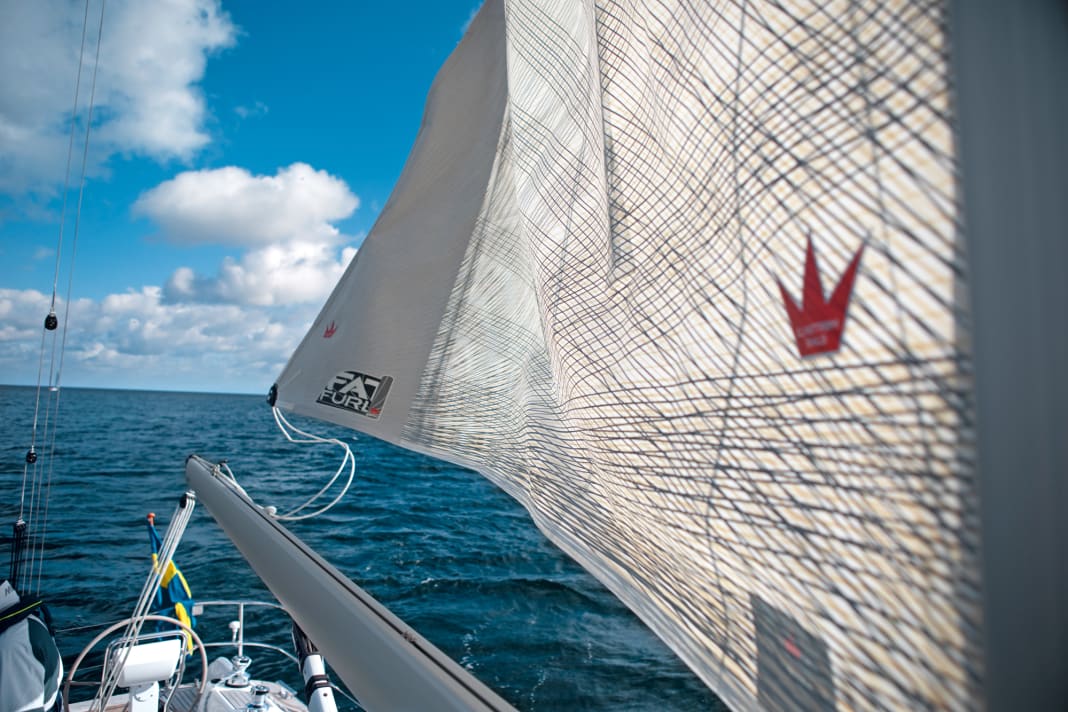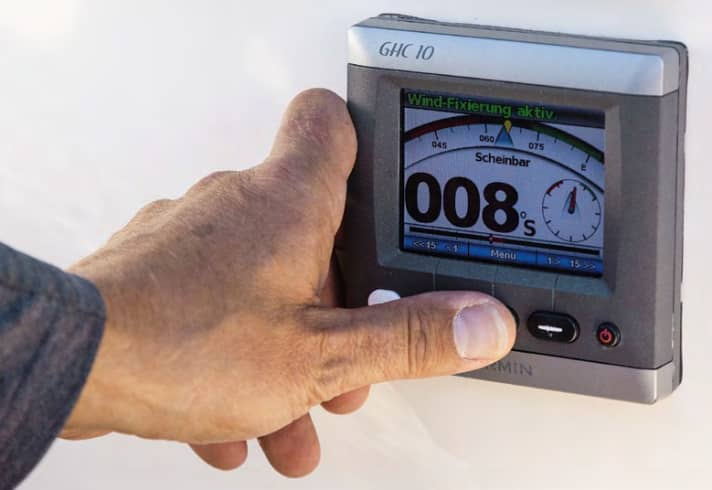
One of the best moments on the boat is when, after completing the casting off manoeuvre, the sails are set and the engine can be switched off. Suddenly there is calm, the yacht lies on its side and begins to pick up speed, driven by the wind. Sailors have been looking forward to this all week. But how do you get the mainsail up and down completely relaxed and without any problems?
This elementary task on board seems almost banal at first glance, but there are a few tricks that can be used to simplify the manoeuvre. Good preparation helps when setting the sail. If the sail goes up quickly, less space is needed for the manoeuvre and the shorter it flutters, the less strain is placed on the cloth. It is not without reason that this manoeuvre is also referred to as killing.
Good preparation is very important
In the past, it was not uncommon for sails to have to be set in the harbour or to be recovered there after the voyage. When there were no reliable, powerful drives, crews had no choice but to moor and unmoor under sail. However, there were usually larger harbours available than today, including rigging dolphins. The boats were moored in these harbours and the sails could be set or recovered standing in the wind.
Today, with modern yachts and powerful propulsion systems, such manoeuvring aids are no longer needed. Consequently, they have given way to additional berths in most harbours. This means that sailing in the harbour is no longer possible in many places and is often even prohibited. As a result, the cloths usually have to be set or retrieved outside the harbours.
Nevertheless, these manoeuvres still begin today at the berth - with the preparation. All sails, usually the main and genoa, should be rigged and prepared. In such a way that they cannot be released uncontrollably by the wind, but can still be operated quickly. So never leave the harbour with the lazybags closed and the main halyard untied! Because if the engine suddenly fails in front of the pier heads, you will be glad to be able to hoist the sail and sail free. As there are now hardly any sheltered outer harbours, it is advisable to look for the calmest possible area in front of the harbour for manoeuvres. This is easy with an offshore wind, but almost impossible if it is blowing directly onshore.
However, a small hatch or even the cover of a pier is enough to reduce the wind and, above all, the swell when manoeuvring crossways. Bucking the yacht in higher seas can be very dangerous for a person who has to leave the protective cockpit for sailing manoeuvres. Setting and recovering the sheets should always be done as quickly as possible, but not hastily. In the middle of the manoeuvre, the yacht will be unable to manoeuvre and this phase should not last unnecessarily long. In addition, if the procedure takes too long, the manoeuvring area increases, which increases the risk of collision.
Pay attention to the sequence
For most yachts, the rule of thumb for the order of the sails is: first the main when setting, first the genoa when hoisting. Or in other words: the mainsail first and last. There are several reasons for this: If the yacht is equipped with a furling genoa, which applies to almost 90 per cent of all newly delivered yachts, it is much easier to handle than the mainsail. So if something snags or jams when setting the mainsail, you only have to worry about this sail and don't have a second one rattling in the wind.
The latter can even be dangerous if, for example, a person has to go to or in front of the mast to work on the main. Then it is not good to be hit by the clew of the flapping genoa at the same time. This is another reason why metal shackles should not be used to connect the sheet to the sail. If shackles are used at all, for example on sheets with fixed eyes such as tapered Dyneema cordage, then use soft shackles. These are themselves made of cordage and are soft.
Setting the mainsail: Step by step






If the mainsail is set first, it can be used to set course without immediately unfurling the genoa. Sailing off with the main set first also reduces the manoeuvring space required. It is also only possible to leave the previously visited protected area with the main. Once open water is reached, it is much easier to assess which sail is the right one for the prevailing conditions, i.e. whether the genoa should not be fully furled at all or whether the main should be reefed before it is furled.
When setting the mainsail, the yacht should not be directly into the wind and the boom should be slightly outside the centreline of the ship, which reduces the risk to the crew's heads. In addition, rainwater may have accumulated in the cloth troughs so that it does not drip directly onto the crew or into the companionway.
Tips for setting the mainsail
- Work quickly, but not hastily
- Heads down, the large tree sometimes sweeps violently over them
- After setting, clear all lines, especially the main halyard
- Establish a basic trim while still in the wind: Enforce halyard and cunningham. Retrim later
- Article on trimming the mainsail
Hoisting and raising the mainsail
When recovering, it is again important to have as little speed as necessary in the boat so as not to increase the wind pressure on board, as described above. In regattas, it is also common to sail backwards for setting and recovery in order to reduce the apparent wind on deck and thus protect the often more sensitive cloths. However, this is only recommended with an experienced helmsman and crew. The person at the helm must concentrate fully on this job and cannot help with the sailing manoeuvre, unlike often when sailing ahead.






An alternative to the recovery procedure shown is often used by single-handed sailors. This requires lazyjacks as well as not too strongly swept spreaders and well-running mast sliders. The yacht initially remains roughly on a half-wind course, which the autopilot maintains. The genoa is set. The sheet is furled until the sail kills, the boom is almost abeam. Now the halyard is furled and the sail falls into the lazyjacks. Even if help is needed on the mast, this is possible because the autopilot is steering. However, it can usually only do this well on course and under way, not so much in the wind. Once the main has been recovered, start the engine and finally recover the genoa.
The right technique for upholstery
Stress can be avoided, some work steps can be shortened and a lot of time can be saved with the right technique. The handles on the luff are crucial when the cloth comes down the mast. The bays between the sliders must be laid alternately to port and starboard. They form the foundation for the subsequent rigging.
This is then simply done by hand, starting from the leech and working up to the mast. The big advantage: if the mainsail is already correctly hoisted before entering the harbour, it no longer needs to be handled at the berth.
Then the only thing missing is the tarpaulin, because UV radiation is the material's biggest enemy, even more so than culling.
Furling mainsail
Furling mainsails have not yet become as popular as furling genoas. This is partly due to the significantly higher price of such a system compared to a conventional main, but also to the bad reputation of furling sails to date. They had to be cut hollow in the leech, especially with cheap materials, as normal battens for controlling the leech were not possible. Today, however, with better materials and vertical battens, furling mainsails can also be hoisted aft and are hardly inferior to conventional cruising sails in terms of efficiency.






However, the decisive argument in favour of this type of mainsail is that it is much easier to use than a standard sail, which is why the furling mainsail is increasingly being used on charter yachts. No-one has to leave the cockpit to set or retrieve it, and there is no need to prepare or rework it: Once the sheet is twisted into the mast, it is stowed away at the same time; lazyjacks or lazybags are not required. And there is no need to operate a large halyard with its long distances.
When furling or unfurling, the yacht should be positioned roughly into the wind with the boom slightly off-centre to reduce the risk of injury. It is best to do this on the side that favours furling. If the system is furling anti-clockwise, the boom should be slightly to port. Then the cloth does not have to be wrapped around the split edge in the mast. This saves material and energy.
Manoeuvring tips for furling mainsails
- Do not trim the foot as tightly as with standard sails
- Work quickly so as not to let the cloth kill for an unnecessarily long time
It's even easier with these 5 tricks:
1st helping hand
If the autopilot steers according to the wind direction, it can reliably keep the bow upwind. This makes manoeuvring even easier, whether with two people or single-handed. The helmsman can concentrate fully on working on the halyard.

2. easy run
The bow does not necessarily have to be exactly in the wind for recovery, but it helps enormously in stronger winds. Then the slides or cars run even more easily in the mast groove and the mainsail comes down almost by itself.

3. material differences
Stiffer laminate or even fully battened sails are easier to fold neatly. However, the principle described on the right-hand side works with all sail materials.

4. recovery aid
The mainsail is also easy to hoist without going downwind. The tightly sheeted genoa can help with this. Its downwash takes the pressure off the mainsail. This allows it to be hoisted upwind.

5. video tutorials for beginners
This might also interest you:

